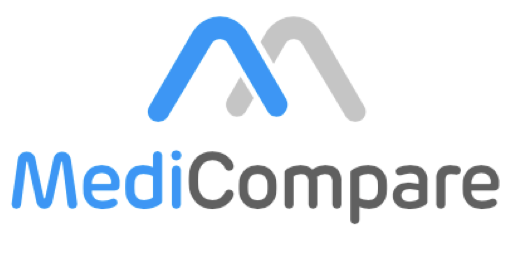Coeliac disease is a common condition of the digestive system. With Coeliac disease, the small intestine becomes inflamed and unable to absorb nutrients. Coeliac disease is an autoimmune condition.
Symptoms of Coeliac Disease
People with milder cases of coeliac disease may not experience any noticeable symptoms, and therefore the diagnosis is often detected during testing for a separate condition.
Diarrhoea is the most prevalent and common symptom of coeliac disease. The diarrhoea is caused by the body not being able to absorb nutrients fully and properly (malabsorption).
Other symptoms to do with the gut include:
- Bloating
- Flatulence (passing wind)
- Abdominal pain
- Indigestion
- Vomiting (however, usually only affects children)
- Constipation
Other more general symptoms may include:
- Unexpected weight-loss
- An itchy rash
- Fatigue (extreme tiredness), this may be a sign of iron deficiency anaemia or vitamin B12 folate deficiency anaemia
- Numbness or tingling in hands and feet (peripheral neuropathy)
- Swelling of the hands, arms, feet and legs – caused by a build-up of fluid (oedema)
- Difficulty getting pregnant
- Disorders that affect balance, speech and coordination.
Children with coeliac disease may find that they grow at a slower rate than their peers, and, than expected. This is because the inflammation can prevent the body from absorbing the nutrients from food.
What causes coeliac disease?
Since coeliac disease is an autoimmune condition, the immune system (the body’s defence system against illness and infection) mistakenly attacks healthy tissue. Meanwhile, the healthy cells are substances for harmful ones and the body produces antibodies against them; antibodies usually fight off bacteria and viruses. The disease is caused by an abnormal reaction from the immune system to the protein gluten, found in such foods as pasta, bread and biscuits etc. It mistakes this substance as a threat to the body. The antibodies then are produced and cause the surface of the intestine to become inflamed, swollen and red.
The surface of your intestine is normally covered with millions of little tube shaped growths called ‘villi’. The villi increase the overall surface area of the gut and help the gut to digest food more effectively. With coeliac disease, the damage left by the inflammation in the lining of the gut flattens the villi, reducing their ability to aid with digestion.
In consequence, the intestine isn’t able to digest the nutrients from your food – which is what causes the symptoms of coeliac disease.
Treating coeliacs disease
Whilst there is no cure for coeliac disease, switching to a gluten free diet will theoretically help relieve symptoms. Thus, coeliac disease is usually treated by just simply excluding foods that contain gluten. Doing this aims to prevent damage to the lining of your intestines (gut) and the symptoms associated with coeliac disease, such as stomach/abdominal pain and diarrhoea.
This gluten-free lifestyle cannot be temporary however, if you have the disease, you will have to give up all sources of gluten for the rest of your life. If you return to consuming foods containing gluten, your symptoms will just return and this can cause long-term.
While this may all sound extremely daunting, your GP will guide you through this treatment with all the help and advice required to aid you managing your new diet plan. Your GP will offer an annual review, during which your weight and height will be measured, along with a review of your symptoms – here they will ask you all about how your diet is working out for you and if you need any further professional medical help or nutritional advice.
Once having implemented this new diet, your symptoms should see huge improvement within a few weeks at most. Nevertheless, for your digestive system to heal completely, it can take up to two years – but does not usually exceed this amount of time in most cases.
Foods containing gluten, which are unsafe to eat of you have coeliac disease (unless they are specified as gluten free):
- Pasta
- Bread
- Biscuits
- Crackers
- Cereals
- Cakes
- Pastries
- Pies
- Gravies and many types of sauces (always check ingredients)
It is always important to look at the food labels on the packaging of any food you may buy or consume. May processed foods contain gluten in the additives, such as malt flouring and modified food starch.
Gluten may also be found in non-food products such as postage stamps, lipstick and some kinds of medication.
Gluten free foods, which are safe to eat:
- Fruit and vegetables
- Meat and Fish
- Most dairy products; such a cheese, milk and butter
- Rice and rice noodles
- Potatoes
- Gluten-free flours, including soy, potato, rice and corn.
By law, food labelled claiming to be gluten free can contain no more than 20 parts per million (ppm) of gluten.
The Coeliac UK website provides further information on the laws on gluten-free products.
Other treatments
Vaccinations
In some cases, coeliac disease can cause some peoples spleens to work less effectively, which means they are more vulnerable to infection.
Therefore, some are required to have extra vaccinations, including:
- Flu (influenza) jab
- Pneumococcal vaccine – protecting against infections caused by the Streptococcus pneumoniae bacterium.
- Hib/MenC vaccine – protecting against sepsis (also known as blood poisoning), pneumonia and meningitis (which is an infection of the lining of the brain).
Dermatitis herpetiformis
If you have Dermatitis herpetiformis, which is an itchy rash often caused by gluten intolerance, cutting out gluten should be the answer to clearing it up.
However, it can sometimes take a while for a gluten-free diet to kick in and clear up a rash than does to clear up the other related symptoms.
If that is the case for you, you may be prescribed a medication called Dapsone to help speed up the healing process for your skin rash. This medication is in the form of a tablet, and should be taken orally twice a day.
This medication, however, has its side effects. Such as headaches and even depression. Therefore, you will always be prescribed a low dosage of it.
You may be required to take Dapsone for up to two years to control the dermatitis herpetiformis. After this, you should continue with your gluten-free diet and you should no longer need this medication for the rash.
If you are interested in diagnosing or getting tested for coeliac disease, we offer health cash plans which can be used for such things and also put towards other treatment like physiotherapy and dental treatment.

